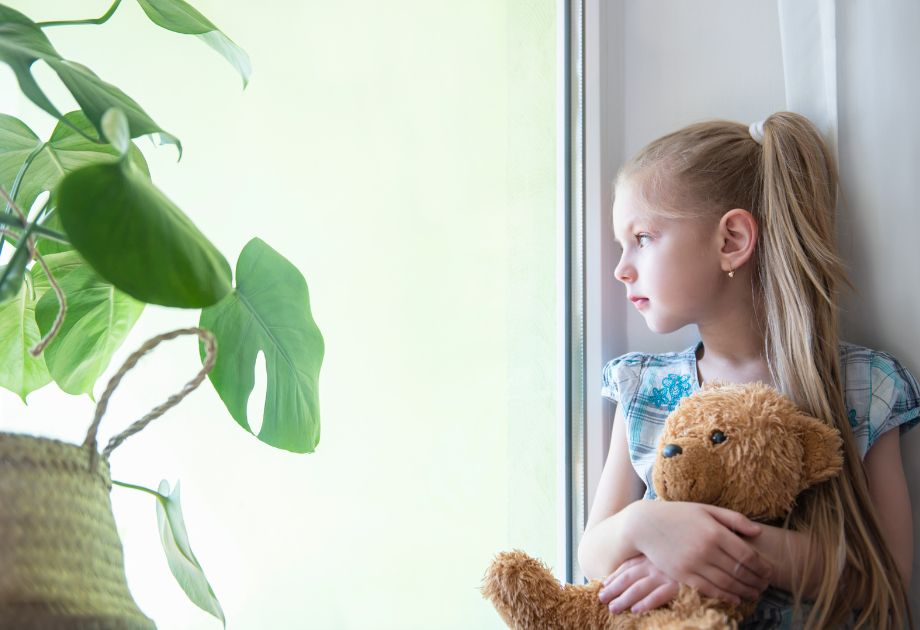5 Ways to Support Your Child’s Mental Health During Summer Break
5 Ways to Support Your Child’s Mental Health During Summer Break
(1).jpg)
Have you noticed your child acting differently now that school’s out—maybe more withdrawn, restless, or easily upset, and you’re not sure why? Are they more irritable than usual, spending extra time alone, or suddenly anxious about things that never used to bother them?
Summer break brings more free time, but it can also disrupt routines that help kids feel stable, especially for those who rely on structure to manage their emotions. Without the daily rhythm of school, some kids struggle to regulate their mood, connect socially, or feel a sense of purpose—leaving you to navigate unexpected emotional ups and downs.
It’s easy to assume this shift is just part of the season, but emotional changes in children can be early signs that they’re feeling overwhelmed. Knowing what to watch for and how to respond can make a big difference in how your child feels this summer.
In this article, you’ll find five practical and compassionate ways to create a more emotionally supportive summer environment at home.

Why Summer Can Be Emotionally Challenging for Children
It’s easy to associate summer with fun, freedom, and relaxation—but for many children, the shift away from the school routine can increase stress.
The structure of the academic year provides consistency: a set time to wake up, clear expectations, regular social interaction, and support systems built into the day. When that structure suddenly disappears, it can feel unsettling. Even kids who look forward to summer may experience a drop in motivation, mood, or sense of purpose after the initial excitement fades.
For children who are already sensitive to change or who struggle with anxiety, the unpredictability of summer days can amplify those feelings. They may not have the words to say, “I miss the routine,” or “I feel bored and disconnected”—but their behavior often speaks volumes.
Recognizing that these emotional shifts are common (and not a sign that you’re doing something wrong) is the first step in helping your child navigate this season with more ease.
Fortunately, you don’t have to overhaul your entire summer plan to make a difference. A few thoughtful changes to your daily rhythm and the way you respond to your child’s emotional needs can go a long way.
How to Recognize the Signs
Before you can help, it’s important to know what to look for. Children don’t always have the words to describe their stress, so anxiety often shows up in other ways.
What to Watch For:
- Trouble falling asleep or staying asleep
- Sudden changes in appetite
- Increased irritability or emotional outbursts
- Avoidance of social situations or favorite activities
- Physical symptoms like stomachaches or headaches
- Frequent worry or restlessness, especially around daily plans
Spotting these changes early can help you respond calmly and confidently.

Simple Strategies to Support Your Child’s Emotional Well-Being
Creating calm in the chaos of long, unscheduled days starts with small, intentional steps. These five approaches can help ease anxiety and promote emotional wellness throughout the season.
1. Create a Predictable Routine
- Reduces uncertainty and helps your child feel secure
- Maintains healthy habits like sleep, meals, and downtime
Try building a simple daily schedule that includes:
- Consistent wake-up and bedtime
- Blocks for meals, outdoor play, and quiet time
- A visual calendar so kids know what to expect
2. Encourage Social Connections
- Regular interaction reduces isolation and builds confidence
- Arrange playdates, family outings, or group activities
- Consider camps, local events, or virtual hangouts to keep kids engaged
3. Balance Screen Time
- Too much screen time can contribute to irritability and disrupted sleep
- Set device-free zones (like at meals or bedtime)
- Replace excess screen use with games, crafts, or outdoor activities
- Use screen time as a reward after completing tasks or being active
4. Practice Mindfulness Together
- Mindfulness helps calm anxious thoughts and improve focus
Try easy techniques like:
- Breathing exercises or short meditations
- Gratitude journaling
- Quiet walks or sensory play outdoors
- Keep routines short and fun to build consistency
5. Know When to Seek Extra Help
- If anxiety interferes with daily life or becomes persistent, support from a mental health professional may help
- Watch for signs like ongoing mood changes, isolation, or trouble sleeping
- Open up conversations and let your child know it’s okay to ask for help
Keep Your Child’s Mental Health on Track This Summer with Child Focus
Every child deserves a break filled with comfort, connection, and care. By recognizing anxiety early and using simple strategies at home, you can create a more stable and emotionally safe environment during these often-unpredictable months.
When you need extra support, Child Focus is here—with compassionate services, trusted professionals, and programs designed to help your child thrive.
Let’s make this a season of growth, calm, and confidence—for both of you. Reach out to us today!
For more tips, follow Child Focus on Facebook, X, Instagram, and LinkedIn today!
Has Child Focus made a difference in your life or the life of someone you care about? Leave Us A Quick Review Here!
